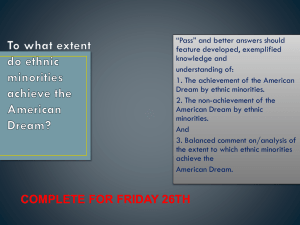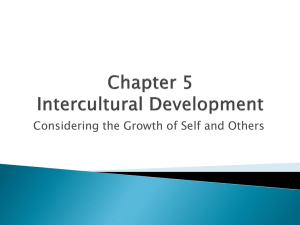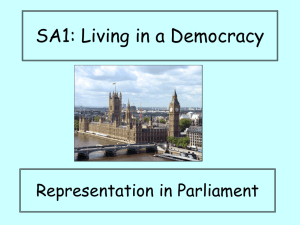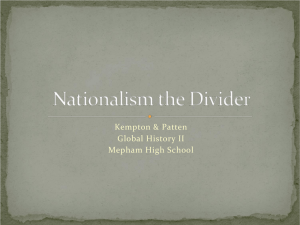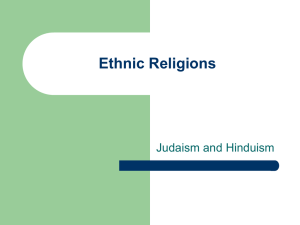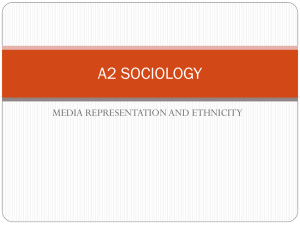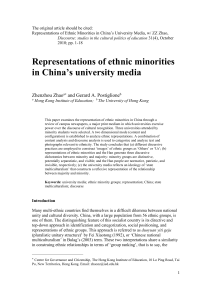The Ethnic Diversity Managemement in the EU: a Paradigmatic
advertisement
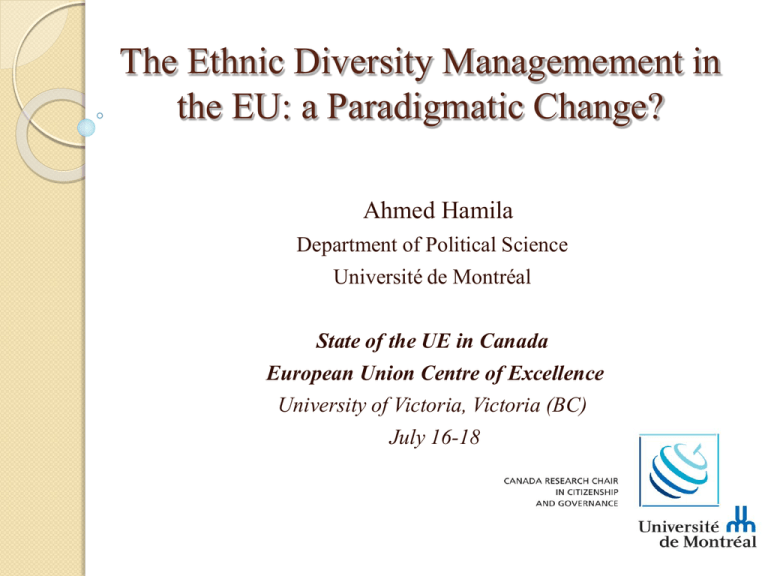
The Ethnic Diversity Managemement in the EU: a Paradigmatic Change? Ahmed Hamila Department of Political Science Université de Montréal State of the UE in Canada European Union Centre of Excellence University of Victoria, Victoria (BC) July 16-18 “The enlarged EU is more than ever home for people of diverse cultures, traditions and beliefs […] a shift is needed from ‘multicultural’ to ‘intercultural’ societies if we are to make the most of the cultural diversity.” Commissioner Ján Figel, Member of the European Commission responsible for Education, Training, Culture and Youth (2008) Is there a paradigmatic change in the way the EU manage the ethnic minorities? Hypotheses: 1. There is NOT a paradigmatic change regarding the protection of individuals with ethnic belonging 1. There is a paradigmatic change regarding the protection of ethnic minority groups Plan 1. Two dimensions of ethnic diversity management (individuals/groups) 1. Different level of change (settings/instruments/paradigm) Part 1: Two dimensions of ethnic diversity management Protection of individuals with ethnic belonging Non-discrimination Protection of ethnic minority groups Multiculturalism ⇒ Interculturalism Dimension 1: Protection of individuals with ethnic belonging 1997: Treaty of Amsterdam (EU) 2000: Directive 2000/43/CE and Directive 2000/78/ CE (Council of the EU) 2001-2006: Action programme to combat discrimination (Council of the EU) 2004: Green Paper on equality and nondiscrimination in an enlarged EU (European Commission) 2008: Framework decision 2008/913/JHA (Council of the EU) Dimension 2: Protection of ethnic minority groups February1995: Framework Convention for the Protection of National Minorities (Council of Europe) February 2006: Recommendations on Policing in MultiEthnic Societies (OSCE) May 2008: White Paper on Intercultural Dialogue (Council of Europe) 2008: European year of Intercultural Dialogue (European Commission) Part 2: A paradigmatic Change? Policy Paradigms, Social Learning, and the State (1993), Peter Hall First-order change: settings Second-order change: instruments Third-order change: paradigm Individuals Groups First-order change (settings) X X Second-order chabge (instruments) X X Third-order change (paradigm) X Dimension 1: Protection of individuals with ethnic belonging First-order change: Precision of legislative tools Second-order change: More binding legislative tools New actors invested Third-order change: No third-order change Dimension 2: Protection of ethnic minority groups First-order change: Broader categories of protection (national minorities and ethnic minorities) Second-order change: Legislative and non-legislatives tools Domain change (from security to social cohesion) New actors invested Third-order change: From multiculturalism to interculturalism Conclusion Is there a paradigmatic change in the way the EU manage the ethnic minorities? No, there is NOT a paradigmatic change regarding the protection of individuals with ethnic belonging (but there are first and second order changes) Yes, there is a paradigmatic change regarding the protection of ethnic minority groups


